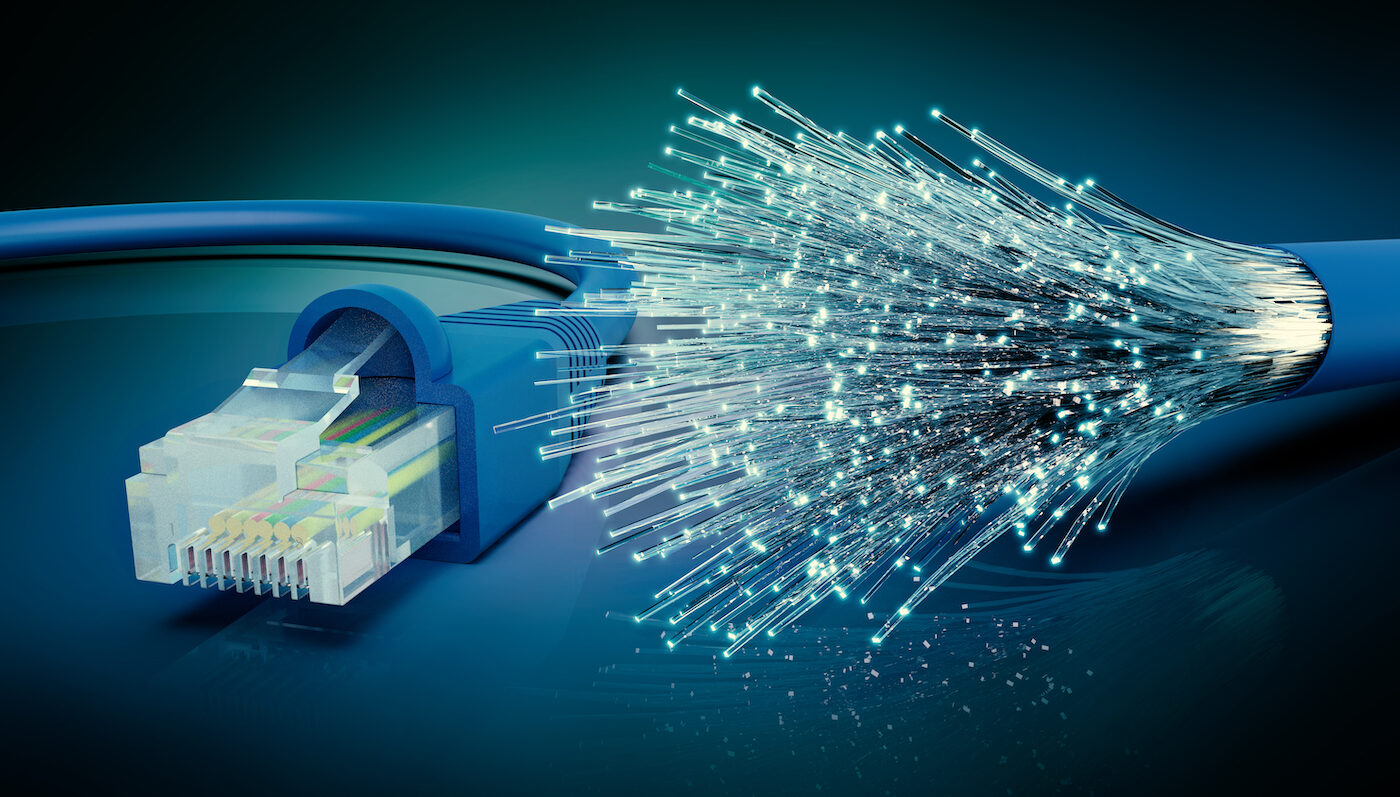What is Fiber Optic Technology?
Fiber optic technology uses glass threads called optical fibers to transmit data. Unlike copper wire networks that are susceptible to electromagnetic interference, fiber optic connections can carry digital data using pulses of light through the fibers. Data transmitted through fiber travels close to the speed of light and has exponentially greater bandwidth potential than older broadband technologies.
Fiber networks employ different topologies depending on the application and scale. Fiber to the Premises (FTTP) topology brings a single strand of fiber directly to a home or business, providing dedicated high-speed connectivity. This is considered a ‘fiber in the loop’ type solution.
Other common fiber network topologies include:
– Fiber to the Cabinet (FTTC) – Fibers terminate in a streetside cabinet, with the final connection to premises over copper.
– Fiber to the Curb (FTTC) – Fiber runs to a distribution point close to residences with the last segment over coax or copper.
Regardless of topology, fiber networks provide future-proof broadband that can scale to meet exponentially growing demand for bandwidth-intensive applications.
The Benefits of Fiber
With fiber optic technology’s massive bandwidth potential, networks deployed today have capacity well beyond current needs. This “future-proofs” infrastructure against bandwidth demands not even imagined yet. Some key advantages of fiber include:
Speed – Today’s fiber networks deliver multi-gigabit speeds symmetrically. With a single strand of fiber capable of 40Gbps or more, speed will never be an issue.
Capacity – A single fiber can carry thousands of high-definition video streams simultaneously. Total capacity is measured in petabits, far surpassing any foreseeable bandwidth demand.
Reliability – Fiber is highly resilient to external interference. Networks remain largely unaffected by anything from lightning strikes to motor vehicle accidents that could potentially damage copper lines.
Low maintenance – Fiber lines require no electrical power to transmit data and have a lifespan of over 25 years. Savings from reduced truck rolls add up over time.
Scalability – When upgraded, fiber systems can scale speeds exponentially through technology advances rather than an entirely new infrastructure investment as with copper.
Latency – Fiber’s light-speed signals result in ultra-low latency. This supports applications like augmented/virtual reality, autonomous vehicles, and telemedicine that are latency-sensitive.
Security – Data transmitted through fiber is difficult to tap without interrupting the signal, making passive network tapping effectively impossible. This is a benefit for network operators and users concerned about cybersecurity.
Economic impact
Building Fiber In The Loop networks represents a major infrastructure investment but yields substantial long-term economic returns according to multiple studies. Some impacts include:
Job creation – Deploying fiber supports local construction and engineering jobs during buildout and creates high-skilled telecom jobs after. A recent study estimated around 28,000 U.S. jobs are supported per $1 billion fiber investment.
Business growth – Communities with ubiquitous high-speed connectivity are more attractive for business location and expansion decisions in our digital economy. Fiber brings the possibility of high-tech jobs that may not even exist yet.
Education – Advanced networks enable improved K-12 and higher education through technologies like online coursework, virtual learning labs, and telepresence classrooms regardless of location. This boosts workforce readiness and skills.
Health care – Telemedicine requires high-bandwidth connections to facilitate transmission of medical images, remote monitoring, and virtual consultations. Fiber helps healthcare providers serve more patients.
Property values – Multiple studies show homes located in fiber communities appreciate 2-6% more due to the fiber network’s future-proof capabilities and increased desirability. This boosts tax revenue over the long run.
Quality of life – Ubiquitous high-speed connectivity allows people to live and work wherever they choose while remaining productive and connected to amenities remotely. This enriches lifestyle factors to attract and retain talent.
Utilities leverage fiber
Many utilities are leveraging their existing rights-of-way and infrastructure to deploy fiber broadband networks on a large scale. Electric cooperatives, municipally-owned utilities, and partnerships between public and private entities have been behind some of the most ambitious fiber deployments in recent years.
Rural electric cooperatives in particular have taken a lead in expanding fiber access after recognizing the strategic importance of high-speed connectivity to their members. Some notable utility fiber projects include:
Clallam County PUD, Washington – Partnered with private ISPs to build a 1,100 mile FTTP network passing 30,000 locations, including some of the most remote areas in the state.
Anthropic, California – Using AI to assist linemen, this startup is working with public power providers on a multi-gigabit wireless broadband initiative to connect the last mile.
Wilkes Telephone Membership Corporation, North Carolina – A fiber cooperative that has invested $150 million to deploy a 12,000 mile FTTP network reaching 90% of homes and businesses in a rural area.
*Note:
1. Source: Coherent Market Insights, Public sources, Desk research
2. We have leveraged AI tools to mine information and compile it



